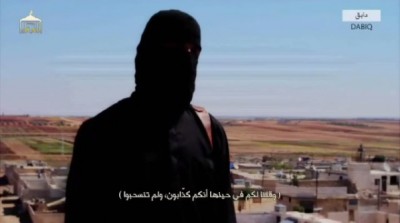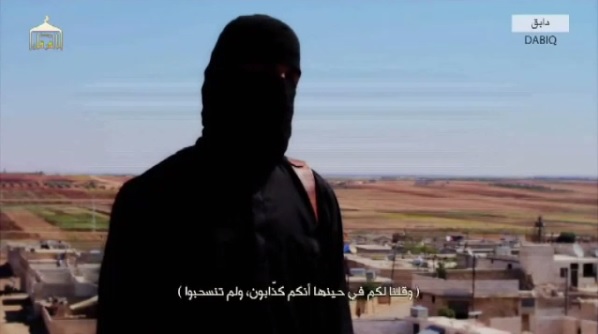
Like a wounded animal lashing out in fury, ISIS is betraying hints of desperation in its latest video, which purportedly shows the aftermath of the beheading of U.S. hostage Peter Kassig, analysts said Sunday.
And if there’s news worse than the apparent brutal death of Kassig, it’s that we should expect even more vicious videos to come from the group, also known by the acronym ISIL, said Haras Rafiq of the Quiliam Foundation, an anti-extremist think tank.
“As we see the U.S. and the coalition making gains against ISIL, we will find that they try and show that they are still strong, try and show that they are just as barbaric as they have been, and unfortunately one of the things we’ll see is that the videos will become more and more barbaric,” he said.
“I think it’s a sign of desperation,” he said. “I think it’s a sign that they know and feel they are under attack, they’re under siege and they’re struggling.”
The video, released online Sunday, shows the aftermath of a beheading, in which the victim is not clearly recognizable. The White House confirmed that the video showed Kassig.
Kassig, 26, who converted to Islam in captivity, also went by the name Abdul-Rahman Kassig. He went to the Middle East as a U.S. soldier and returned as a medical worker, feeling compelled to help victims of war.
The video does show — in gruesome detail — the beheadings of what the group claims are pilots for the Syrian government, which is also battling ISIS forces.
“It can’t be said enough,” said CNN’s Nic Robertson. “This is the most barbaric they’ve done so far.”
The carefully produced video is clearly “a prize piece of propaganda for them,” Robertson says.
It also differs from others produced by ISIS. It doesn’t feature a Western hostage dressed in orange speaking to the camera before his death. Nor does it name the group’s next victim.
It is likely in part meant to scare Syrians and Iraqis into obeying ISIS’ orders when it comes calling, said Rafiq and retired U.S. Army Lt. Col. Joe Ruffini, a counterterrorism expert.
“What ISIS is telling them is, ‘When we come in and tell you to do what we tell you, you know what the consequences are if you say no,’” Ruffini said.
But it also comes at a time when the United States and its anti-ISIS allies are claiming their airstrikes and support for ground forces fighting the group are beginning to slowly turn the tide, said retired U.S. Maj. Gen. James “Spider” Marks.
It also comes during a visit to Iraq by the chairman of the Joint Chiefs of Staff, Gen. Martin Dempsey.
“Clearly there are no coincidences,” Marks told CNN on Sunday. “This is timed very specifically to those activities by the coalition and, I would say, the results of those activities.”
Since beginning airstrikes in August, U.S. officials have touted successes in disrupting ISIS communications and logistics, slowing its advances and forcing fighters to disperse into smaller formations.
Last week, President Barack Obama said the fight was entering a new phase that would rely heavily on Iraqi ground troops and other local fighters.
More recently, U.S. officials have suggested more openness to a role for U.S. ground forces in the fight.
In testimony to the House Armed Services Committee on Thursday, Dempsey said commanders are “certainly considering” the prospect that U.S. forces might be needed to retake the Iraqi city of Mosul, currently held by ISIS.
In Sunday’s video, the narrator taunted Obama to do just that.
CNN

Leave a Reply
You must be logged in to post a comment.